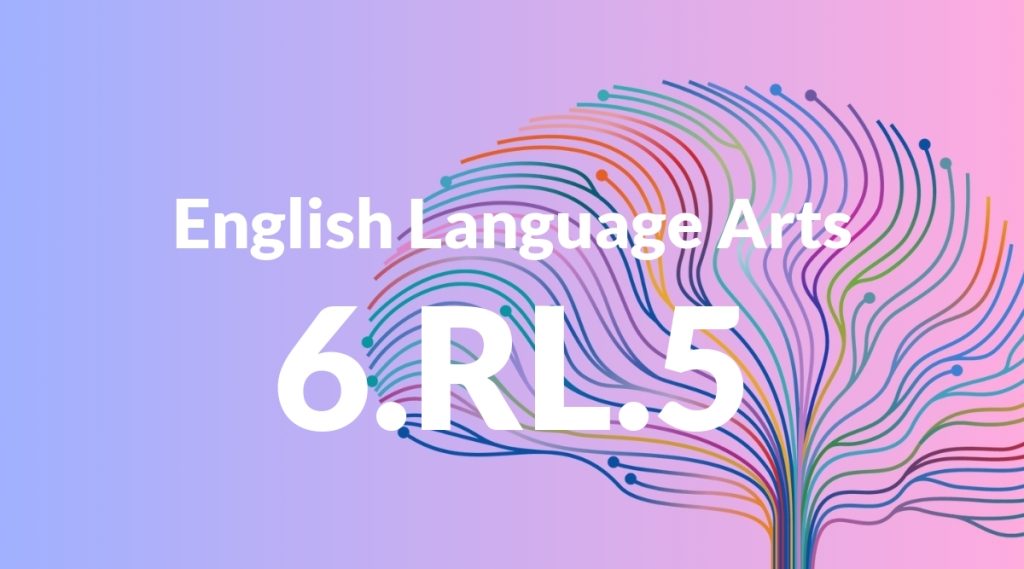Standard: 6.RL.5 – Analyze how a particular sentence, chapter, scene, or stanza fits into the overall structure of a text and contributes to the development of the theme, setting, or plot.
Grade level: Grade 6
Subject: English Language Arts
Domain: Reading: Literature
Teacher Overview
This standard focuses on analyzing how specific parts of a text contribute to its overall structure and meaning. Understanding this helps students appreciate the intricacies of literature and improves their analytical skills. It’s crucial for building a deeper comprehension of texts, which is a key component of English Language Arts in Grade 6. Students need to be familiar with basic literary elements like theme, setting, and plot. They should also have experience identifying and discussing different parts of a text.
Students will be able to perform more advanced literary analysis, including evaluating how different elements of a text work together to create meaning. They will also be better prepared to compare and contrast texts and analyze complex literary themes.
Common Misconception 1
A common misconception is that every sentence or scene must contribute equally to the theme, setting, or plot. This is incorrect because some elements serve more significant roles than others in developing the text.
Intervention 1
Use guided reading sessions where students can identify and discuss the varying importance of different sentences or scenes in the development of the theme, setting, or plot.
Common Misconception 2
Another misconception is that the structure of a text does not impact its meaning. This is incorrect because the structure often plays a crucial role in how the text is understood and appreciated.
Intervention 2
Provide examples of texts where the structure significantly impacts the reader’s understanding. Discuss these examples in class to illustrate the importance of text structure.
Prerequisite Knowledge
Students should have a basic understanding of literary elements such as theme, setting, and plot. They should also be familiar with identifying and discussing various parts of a text, such as sentences, chapters, scenes, and stanzas.
Subsequent Knowledge
After mastering this standard, students will be able to perform more advanced literary analysis, including evaluating how different elements of a text work together to create meaning. They will also be better prepared to compare and contrast texts and analyze complex literary themes.
Instructional Activities
- Group discussions on how different parts of a text contribute to its overall meaning.
- Individual analysis of specific sentences, chapters, scenes, or stanzas in a chosen text.
- Creating visual maps of a text’s structure to see how different elements fit together.
- Comparing and contrasting the structure of different texts.
- Writing essays that analyze the contribution of specific parts of a text to its overall theme, setting, or plot.




